The Science behind the Miraculous Fluid that feeds, heals and fights for your life.
Do you ever wonder what makes up blood? Unless you need to have blood drawn, donate it or have to stop its flow after an injury, you probably don't think much about it. But blood is the most commonly tested part of the body, and it is truly the river of life.
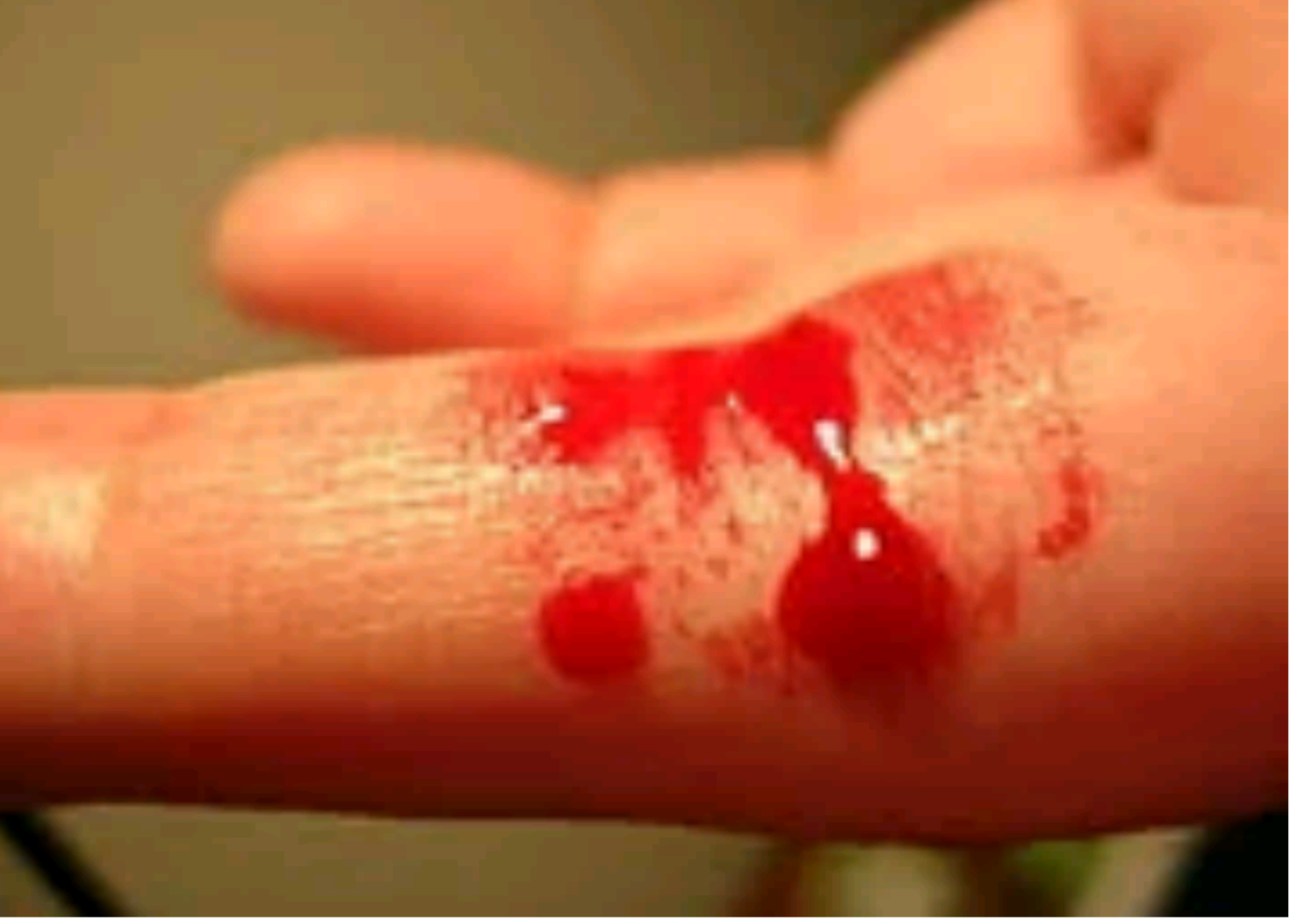
[Shot with my oukitel k6000 plus device]
It feeds oxygen and essential nutrients to living cells in the body and carries away their waste. It carries the footsoldiers of the immune system, white blood cells which seek out and destroy invading bacteria and parasites. And it speeds up platelets to the site of injury or tissue damage, triggering the body miraculous process self-repair.
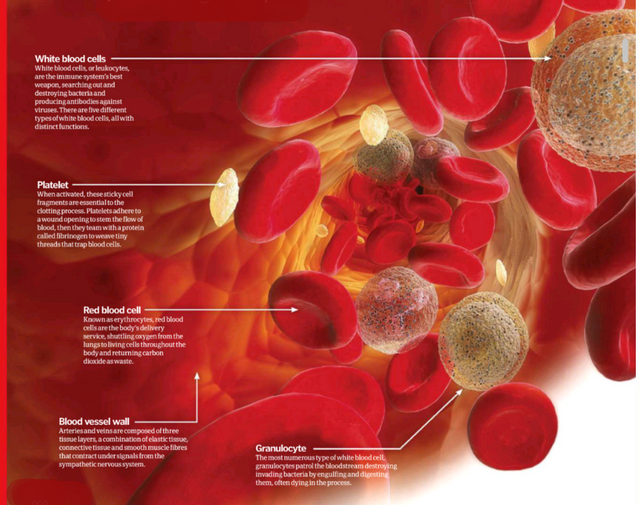
[Shot from science world]
Blood looks like a thick, homogeneous fluid, but its more like watery current of plasma- which is a straw colored protein rich fluid carrying billions of microscopic solids.
There are two main components of blood: Blood cells (collectively known as the hematocrit ) and an aqueous medium for transporting the cellular materials (called the
plasma). The hematocrit consists of three types of cells responsible for the blood's crucial functions.
Components of Blood
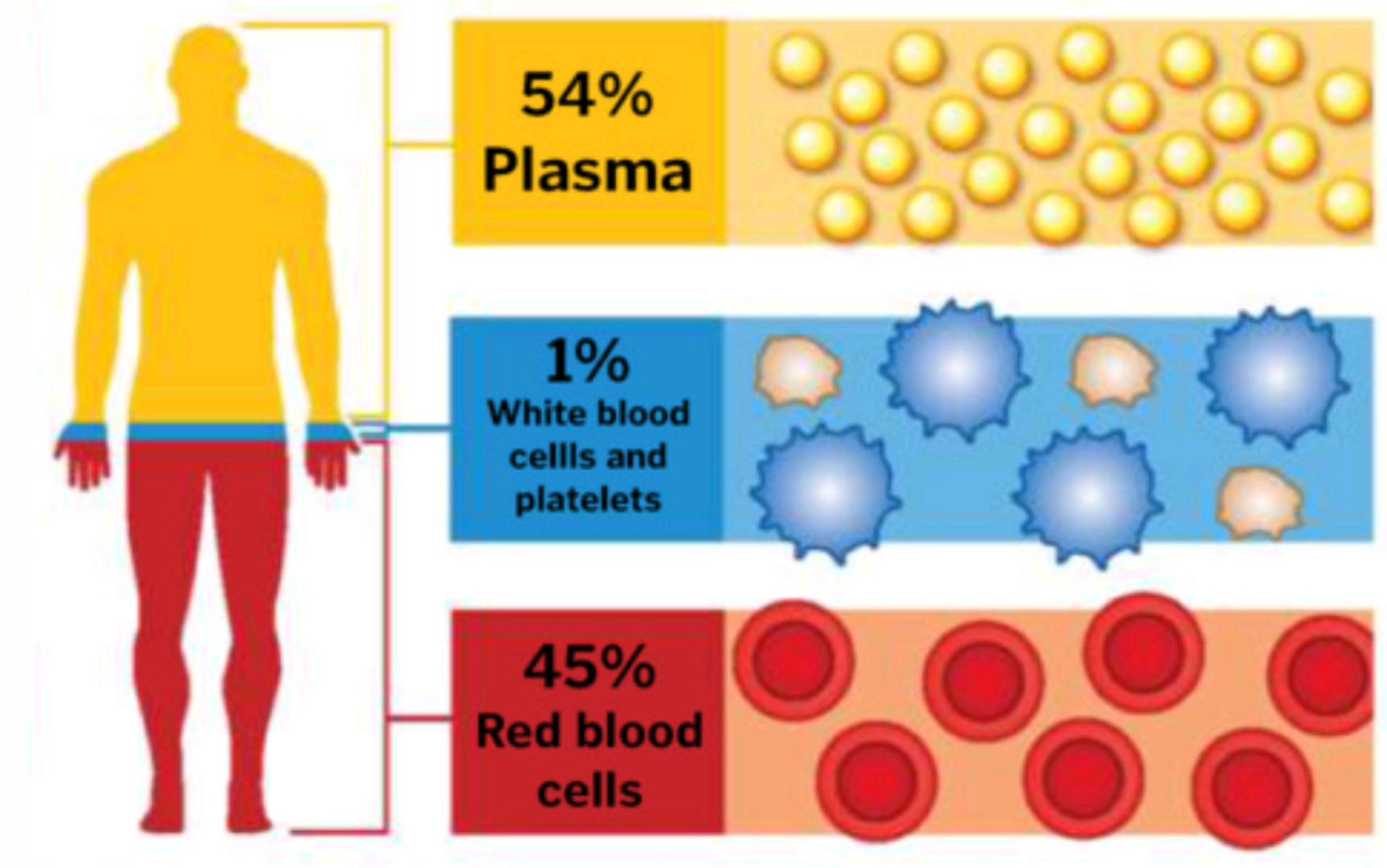
[Shot from science encyclopedia]
Blood is a mix of solids and liquids, a blend of highly specialized cells and particles suspended in protein rich fluid called plasma. Red blood cells dominate the mix, carrying oxygen to living tissue and returning carbon dioxide back to the lung, for every 600 red blood cells, there is a single white blood cell of which there are five different kinds. Cell fragments called platelets use their irregular surface to cling to vessel walls and initiate clothing process.
Red blood cells are so numerous because they perform the most essential function of blood which is to deliver oxygen to every cell in the body and carry away carbon dioxide.
- Red blood cells (erythrocytes)transport respiratory gases. Erythrocytes give vertebrate blood its distinctive color due to the presence of hemoglobin , an iron-containing protein that binds oxygen in the lungs and transports it to tissues in the body.
- White blood cells (leukocytes) serve an immunological function, defending the body against foreign materials.
- Platelets (thrombocytes) are cell fragments that play an important part in the clotting of the blood.
Blood contributes about 7 percent of the human body weight , with an average density of approximately 1060 kg/m³ . The average adult has a blood volume of roughly 5 liters. Red Blood cells constitute about 45 percent of whole blood by volume, with the other 54 percent represented by plasma, a fluid that is the blood cells' liquid medium, appearing golden-yellow in color.
And 1 percent of white blood cells and platelets
Lifecycle of Blood Cells
As an adult, all your Red Blood cells are produced in red bone marrow, the spongy tissue in the bulbous ends of long bones and at the center of flat bones like hips and ribs.
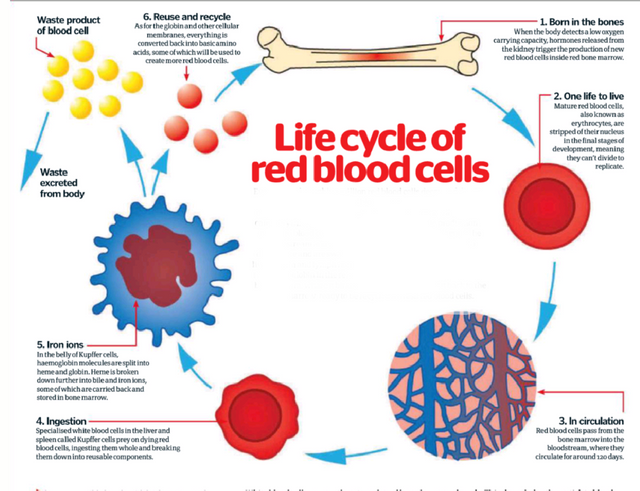
[Shot from science encyclopedia]
Inside the marrow, red blood cells start out as undifferentiated stem cells called hemocytoblasts. If the body detects minuscule drop in oxygen carrying capacity, a hormone is released from the kidney that trigger the stem cells to become red blood cells. The body is keenly sensitive to blood hypoxia(reduced oxygen carrying capacity) and triggers the kidney to release a hormone called erythropoietin. This hormone stimulate the production of more red blood cells in bone marrow. Red blood cells enter the bloodstream and circulate for 120 days before they begin to degenerate and are swallowed up by moving macrophages in the liver spleen and lymph node. The macrophages extracts iron from the heamoglobin in the red blood cells and release it back into the bloodstream were it binds to a protein that carries it back to the bone marrow, ready to be recycled
White blood cells are greatly outnumbered by red blood cells, but they are critical to the function of the immune system. Most white blood cells are also produced in red bone marrow but white blood cells unlike red blood cells come in five different varieties, each with its own specialized immune system.
The first three varieties, collectively called granulocytes, engulf and digest bacteria and parasites and play a role in allergic reaction. Lymphocytes, another type of white blood cells, produce antibodies that build up our immune system to restrict intruders. And Monocytes, the largest of the white blood cells, they enter organ tissue and become marcrophages(microbes that ingest bad bacteria and help break down red blood cells into usable parts)
Platelets arent cells at all, but fragments of much larger stem cells found in the bone marrow. In their resting state they look like smooth oval plates but when when activated to form a clot they take on an irregular form with many protruding arms called pseudopods. This shape helps them to stick to blood vessel walls as well as to each other, forming a physical barrier, around wound sites. With the help of proteins and clotting factor found in plasma, platelets weave a mesh of fibrin that stems blood loss through the wound and triggers the information of new collagen and skin cells.
The Healing Process
Think of blood as the body's emergency response team to an injury. Platelets emit signals that encourage blood vessels to contract, stemming blood loss, and then collect around the wound, reacting with a protein in plasma to form fibrin, a tissue that weaves into a mesh. Blood flow returns and white blood cells begin to hunt for bacteria.
Fibroblasts creates beds of fresh collagen and capillaries to fuel skin cell growth. The scab begins to contract, pulling the growing cells together until damaged tissue is replaced.
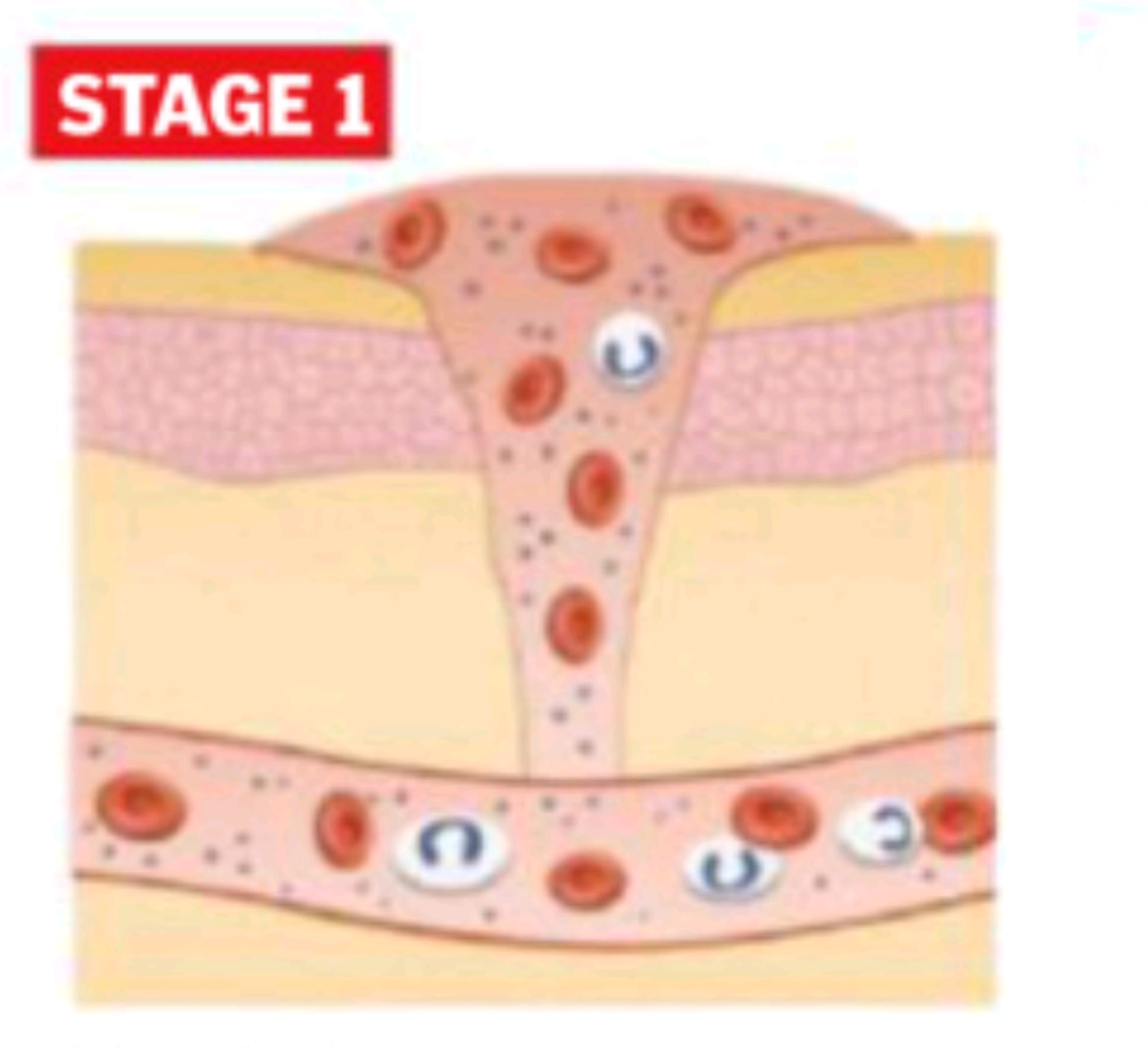
- Injury
When the skin surface is cut, torn or scraped deeply enough, blood seeps from broken blood vessels to fill the wound. To stem the floe of bleeding, the blood vessels around the wound constrict.
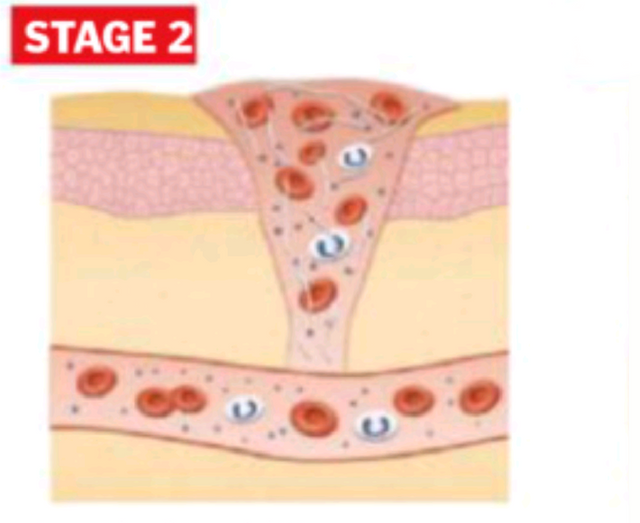
- Heamostasis
Activated platelets aggregate around the surface of the wound, stimulating vascoconstrictions. Platelets reacts with a protein in plasma to form fibrin, a web like mesh of stringy tissues.
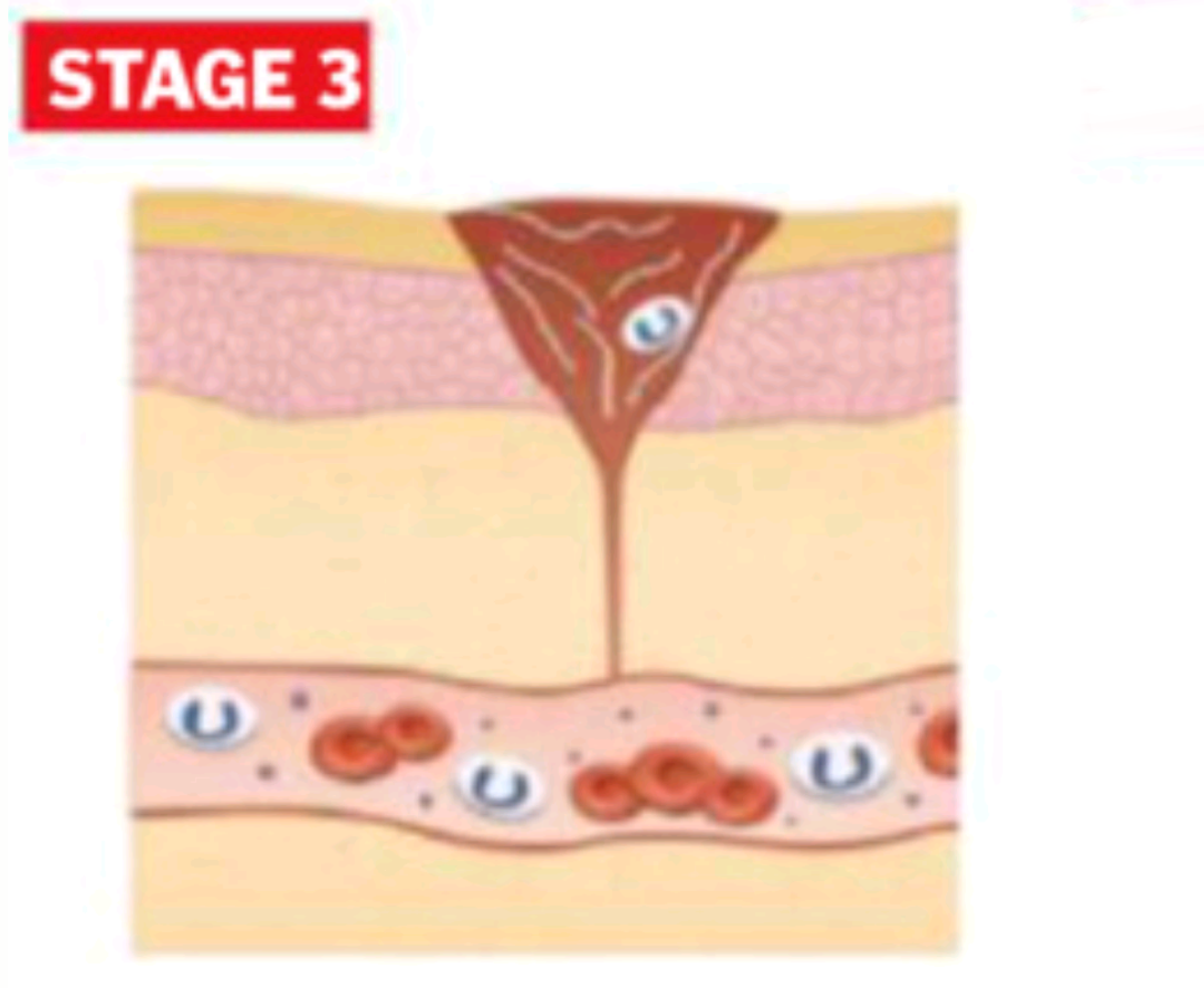
- Inflammatory Stage
Once the wound is capped with a drying clot, blood vessels are reopened and release plasma and white blood cells into the damaged tissue. Macrophages digest harmful bacteria and dead cells.
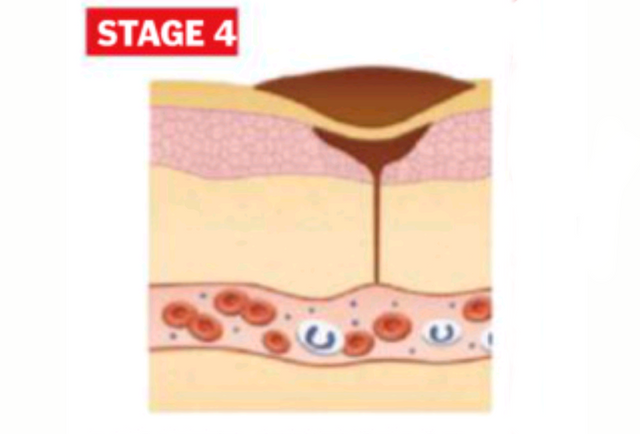
- Proliferative Stage
Fibroblasts lay fresh layers of collagen inside the wound and capillaries begin to supply blood for the forming new skin cells. Fibrin strands and collagen pull the sides of the wounds together.
But even these functions of blood; oxygen supplier, immune system defender and wound healer. Only scratches the surface of critical role of blood in each and every bodily process. When blood circulates through the small intestine, it absorbs sugars from digested food, which are transported to the liver to be stored as energy
When blood passes through the kidneys, it scrubbed of excess urea and salts, waste that will that will leave the body as urine. The proteins in plasma transport vitamins, hormones, enzymes, sugar and electrolytes.
In conclusion pause for a second to listen to your pumping heart and be thankful for the river of life speedily flowing through your veins
If this post was informative, educative, enlightening why not follow and resteem so others can experience same. If you could upvote as well I will be glad and your comment will make me believe I did well in sharing this with the steemit community.
I remain @davyd, thanks for stopping by
Great post bro. Very educative
Thanks bro.